Urban revitalization is green. Let's make it greener, greater, and more inclusive.

Posted August 10, 2011 at 1:33PM
When revitalization of our distressed neighborhoods is done well, it is almost unrivaled in its ability to advance simultaneously the “triple bottom line” of sustainability: improving the environment, the economy, and social equity.
Revitalization is good for the environment for the reasons I discussed in yesterday’s post; it strengthens cities and allows them to absorb population and economic growth in a nonsprawling fashion that is inherently more efficient, less consumptive, 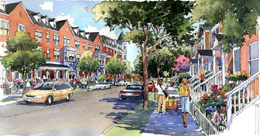 and less polluting than when development spreads out. It is good economically because it requires the building and maintenance of far less new infrastructure, and allows commerce to proceed with less travel time and distance to sap productivity; it also can increase tax revenues.
and less polluting than when development spreads out. It is good economically because it requires the building and maintenance of far less new infrastructure, and allows commerce to proceed with less travel time and distance to sap productivity; it also can increase tax revenues.
Revitalization is not always good for social equity, unfortunately, since without proper attention to the issue residents may not be able to afford to stay in a neighborhood that becomes more expensive. But when done thoughtfully revitalization can be very beneficial to distressed populations, as the inspiring stories of Melrose Commons in the South Bronx, Dudley Street in Boston, and Old North Saint Louis amply demonstrate.
The neighborhood scale and the usefulness of LEED-ND
Last fall I wrote that the two most important scales for thinking about a sustainable built environment are the metropolitan region and the neighborhood. Revitalization happens at the neighborhood scale, where increments of development take place and where most people connect with their cities, their environments, and each other on an everyday basis. This is where change in our built environment occurs and is experienced most immediately.
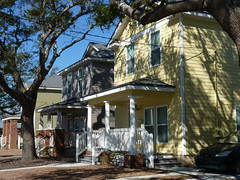 Over the last decade, NRDC made a major investment to help improve the shape and character of American development at the neighborhood scale. With two very able partners in the Congress for the New Urbanism and the US Green Building Council, we conceived and developed LEED for Neighborhood Development, the first set of consensus-based national standards to guide new development to the right places with the right sustainable design. The goal of the program has been to define what is smart about smart growth and what is green about green neighborhoods, so that the private sector, reviewing public officials, and citizens alike will be able to evaluate and encourage the right kind of development. (The US Green Building Council now manages the program.)
Over the last decade, NRDC made a major investment to help improve the shape and character of American development at the neighborhood scale. With two very able partners in the Congress for the New Urbanism and the US Green Building Council, we conceived and developed LEED for Neighborhood Development, the first set of consensus-based national standards to guide new development to the right places with the right sustainable design. The goal of the program has been to define what is smart about smart growth and what is green about green neighborhoods, so that the private sector, reviewing public officials, and citizens alike will be able to evaluate and encourage the right kind of development. (The US Green Building Council now manages the program.)
LEED-ND was designed from the very beginning to be especially supportive of revitalization and infill development in our inner cities and older communities. We hoped to provide a boost for good proposals while they were being considered, along with a set of model standards that could be adapted by governments and others who were also seeking to encourage sustainability.
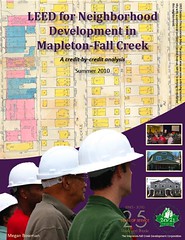 To our immense satisfaction, that is exactly what has been happening, notwithstanding continuing turmoil in the real estate and development industry. Over 100 neighborhood-scale projects have now been certified under LEED-ND, from Vancouver’s urban Olympic Village (now a mixed-use community), to green affordable housing in Savannah, to a revitalizing arts district in Syracuse. In addition, while LEED-ND was intended primarily to influence the private sector, we are extraordinarily pleased that the program is earning increasing government recognition, from a state incentive program in Illinois to new city plans in El Paso and Bellingham, Washington, to the discretionary grant programs of the US Department of Housing and Urban Development, which is now using LEED-ND criteria in its evaluation process.
To our immense satisfaction, that is exactly what has been happening, notwithstanding continuing turmoil in the real estate and development industry. Over 100 neighborhood-scale projects have now been certified under LEED-ND, from Vancouver’s urban Olympic Village (now a mixed-use community), to green affordable housing in Savannah, to a revitalizing arts district in Syracuse. In addition, while LEED-ND was intended primarily to influence the private sector, we are extraordinarily pleased that the program is earning increasing government recognition, from a state incentive program in Illinois to new city plans in El Paso and Bellingham, Washington, to the discretionary grant programs of the US Department of Housing and Urban Development, which is now using LEED-ND criteria in its evaluation process.
Green revitalization of distressed neighborhoods
LEED-ND can be very useful in helping inner-city developers - including nonprofit community development corporations - to guide smarter, greener, and more inclusive development in America’s distressed urban neighborhoods. At NRDC, we are particularly excited to be partnering in an effort to do just that with the Local Initiatives Support Corporation, one of the nation’s leading sponsors of urban community development, with offices in 30 regions across the country. In 2010 LISC invested over a billion dollars in community development, leveraging a total of $2.4 billion for over 10,000 affordable homes and nearly 3 billion square feet of retail and community space.
Together, and with local partners including neighborhood residents, we hope to use LEED-ND to assist the development of demonstration projects and templates to help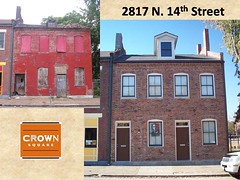 CDCs and municipal development authorities incorporate sustainable practices into their work. While we hope to make a difference, this will be far from a top-down effort. We want to help communities articulate and realize their own goals in a way that will bring them environmental benefits.
CDCs and municipal development authorities incorporate sustainable practices into their work. While we hope to make a difference, this will be far from a top-down effort. We want to help communities articulate and realize their own goals in a way that will bring them environmental benefits.
The collective influence of America’s 4600 CDCs is substantial: in an average year, CDCs and related community-based nonprofit organizations are responsible for building some 86,000 homes and billions of square feet of commercial space in neighborhoods where private interests may be reluctant to accept risk. (For perspective, 86,000 homes represents as many as produced by the nation’s top five homebuilders combined, in a non-recession year.)
The heart of our approach will feature model revitalization projects that achieve local goals while demonstrating a new commitment to sustainable revitalization and advanced practices. More specifically, we hope to help our partners achieve the following:
- Locate, design and build to a sustainability standard sufficient to achieve LEED-ND certification at a high level (including walkable, mixed-use features; transportation choices; access to parks, healthy food, jobs and schools; and advanced techniques for energy and water management);
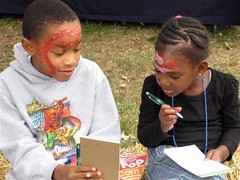 Involve local residents to the greatest extent possible in planning and design, and ensure that there is no net loss in affordable housing;
Involve local residents to the greatest extent possible in planning and design, and ensure that there is no net loss in affordable housing; - Apply sophisticated environmental analysis to quantify the benefits we hope to achieve;
- Develop replicable approaches that can be transferred to CDCs and municipalities around the country, and guidebooks to assist their implementation; and
- Learn lessons along the way that can allow for continual assessment and improvement.
We know this is an ambitious agenda, and we will need the support of additional partners, including financial supporters, to make it happen. The number of projects that LISC and NRDC can undertake directly will certainly be limited by the availability of funding. But we have already begun providing assistance to some really exciting projects in Philadelphia and Indianapolis, about which more in a future post.
This is our contribution, but the challenge and opportunity to help communities improve their urban neighborhoods requires and deserves the involvement of many more parties. While I am immensely pleased that this agenda is now embraced by NRDC, we are only one organization; ultimately, we can provide some dedication and perhaps some environmental leadership, but the revitalization of America’s long-neglected neighborhoods is not about us but about local initiatives across the country.
Fortunately, I am inspired every day by the efforts and ingenuity of neighbors and fellow travelers who share our commitment, whether it be on one city block or on a larger, programmatic scale. One of the goals of this blog is to share their stories, both to bestow a bit of well-deserved recognition on the principals and to help others learn and become as inspired as I am.
This is the second in a series of posts introducing NRDC’s agenda for sustainable communities.
- Part 1: Seeing cities as the environmental solution, not the problem (August 9, 2011)
- Part 3: The importance of regional planning that matters (August 12, 2011)
- Part 4: Implementing sustainable practices on key urban issues (August 15, 2011)
Move your cursor over the images for credit information.